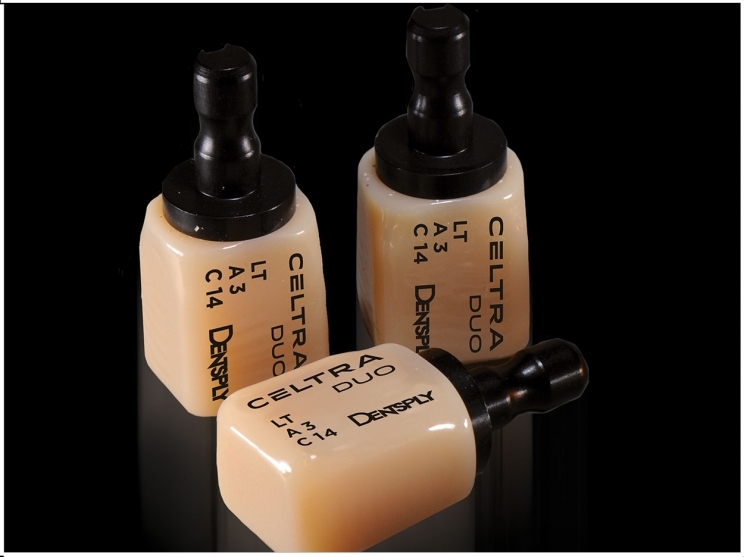
A recent study by the University of Toronto ranked Dentsply Sirona’s Celtra Duo (ZLS) highest in fracture toughness (KIC) compared to 4 other chairside CAD/CAM materials—VITA Mark II, 3M Lava Ultimate, VITA Enamic, and IPS e.max CAD—used for crown fabrication.
The researchers applied a modified compact tension test to measure the fracture toughness of these materials, which included both ceramics and nanoceramic resin composites. Means and standard deviations of fracture toughness measured in MPa m1/2 included:
- Celtra Duo (ZLS) fired and unfired: 2.65 (0.32) and 1.01 (0.15), respectively;
- IPS e.max CAD crystallized and uncrystalized: 1.88 (0.62) and 0.81 (0.25) respectively;
- VITA Enamic: 1.02 (0.19)
- Lava Ultimate: 0.85 (0.21)
- VITA Mark II: 0.73 (0.13)
Celtra Duo (ZLS) and IPS e.max CAD had the highest mean toughness values, with Celtra Duo ZLS outscoring e.max. Both materials had a substantial increase in fracture toughness after firing.
Although the mean KIC values of the tested materials varied considerably, none were able to reach the mean KIC of natural dentin, previously reported at 3.08 MPa m1/2.
The researchers noted that the difference in fracture toughness between IPS e.max CAD and Celtra Duo (ZLS) most likely is due to the composition of Celtra Duo (ZLS), which is mainly 58% silica, lithium-metasilicate, lithium-disilicate, and lithium-phosphate crystals and 10% zirconia crystals in addition to other minor ingredients.
The highly dispersed zirconia content in Celtra Duo (ZLS) is completely dissolved in a glassy matrix and acts as a crystal nucleus. Zirconia-based ceramics are known for their enhanced load resistance and fracture toughness compared to alumina-disilicate or lithium-disilicate ceramics.
Dental restorations must be extremely durable to resist the damaging effects of a harsh oral environment. Fracture toughness is an essential property of any material that relates its resistance to crack propagation, which imminently causes failure.
A restorative material with high fracture toughness shows better fracture resistance and longevity than materials with lower fracture toughness. Also, the grinding of the blocks during the CAD/CAM milling process creates microcracks and flaws that are routinely smoothed with polishing and glazing.
The study, “Fracture Toughness of Chairside CAD/CAM Materials—Alternative Loading Approach for Compact Tension Test,” was published in the July 2016 edition of Dental Materials.
Related Articles
4-D Printing Will Enhance Dentistry
Milling Block Designed for Strength, Aesthetics, and Control
Use a Laser to Replace a Fractured Solid Zirconia Crown











